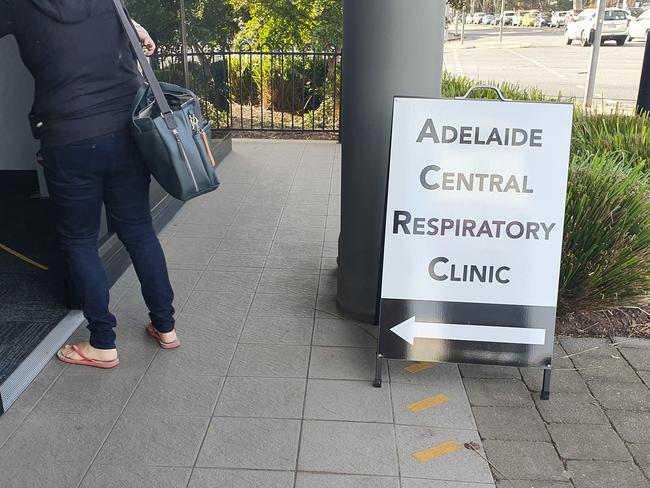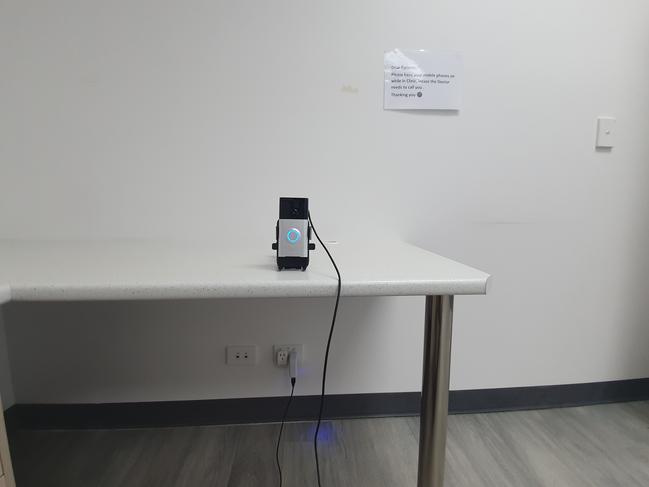What’s involved in getting tested for coronavirus and what does it feel like?
Since February over 70,000 South Australians have been tested for coronavirus. So what does the testing involve? And what does it feel like? Greg Barila recounts his experience.
Coronavirus News
Don't miss out on the headlines from Coronavirus News. Followed categories will be added to My News.
Since February over 70,000 South Australians have been tested for coronavirus. That number is set to swell as authorities, keen to cast a wide net for the virus throughout the community, encourage anyone with even the mildest symptoms to get tested. So what does the testing involve? And what does it feel like? Greg Barila recounts his experience.
Like everyone else, I’ve spent the past two months trying to avoid coronavirus....well, like the plague. Working from home, washing my hands, keeping my distance.
And yet, despite my best efforts to give this unfolding catastrophe a wide berth, there I was last Tuesday, in some dystopian respiratory clinic getting tested for the invisible scourge.
It unfolded like this.
SATURDAY
Start suffering stomach cramps and gastro symptoms.
Call my local GP clinic which directs me to a national hotline where I’m offered a GP home visit, for free. (Thanks bulk billing!).
The doctor runs a quick temperature check, squishes my stomach, concludes it doesn’t look too serious and leaves me with a couple of Buscopan tablets for the discomfort.
Proceed to have a terrible night of cramps alleviated only by a hot water bottle.
Feel better in the morning but experience symptoms off and on through the next few days. Stick to light diet and peppermint tea.
TUESDAY
Wake up feeling lousy. I have a dry throat, throbbing headache and diarrhoea. I’m nauseous. Better go back to the doctor. I describe my symptoms to the doctor who decides we should both put on face masks just to play it safe.
She examines my stomach. Nothing serious.
She thinks I should just monitor my symptoms for a few more days. She writes me a script for some anti-nausea medication if I need it and a pot for a poo test if the diarrhoea gets worse.
She also recommends I get tested for coronavirus. I’m taken aback.

Really? But I don’t have any of the major symptoms. No fever. No cough. No shortness of breath.
Yes, but you do have some respiratory issues, she explains.
The dry throat. The slightly stuffy sinus.
She thinks my chances of actually having the virus are extremely low.
The experts just want to test as many people as possible.
(I have been going to Bunnings, I confess. Yeah, you and everyone else she says).
She gives me the web address to make the booking. That’s that, you’re getting tested.
HERE’S HOW THE PROCESS UNFOLDED
I visit the website to book an appointment and choose the closest clinic from home - Parkside.
I’m able to book for 3pm the same day so I fill out the online registration form in the car at the doctor’s office then go home.
A couple of hours later I get a text message from the respiratory clinic with IMPORTANT INFORMATION about my visit.
When I get to the clinic, the SMS explains, I’m to respond to the message with my full name and wait in the car for further instructions.
At 3pm I park my car, respond to the text and get an instant reply.
“Please wait in your car I will be in contact shortly with further instructions. Thank you”.
After an anxious 34 minute wait, a nurse from the clinic calls and asks me to come to the front of the building.
A sign on the door instructs me not to press the intercom button but wave my hand across the camera instead, then state my name and date of birth.
The door clicks.
At this point, a woman in a full body protective suit greets me in a small foyer of the building which appears to be a vacant business, now COVID-19 testing facility.
The nurse gets me to put on a face mask then points to a small table to my left and asks me to gel my hands. It’s all very Outbreak.
She leads me across the main room which is empty and into one of a number of small numbered rooms, also empty except for a sanitation station, a built-in desk, a chair and a small black device on the desk facing the chair which I soon realise is an Amazon Ring camera, typically used as a camera doorbell.

It all feels a bit Black Mirror and to be honest, I’m nervous. That becomes quickly evident when the nurse enters the room to check my vital signs. Temperature check, all clear.
She puts a small heart rate monitor on my finger and cocks her head in a show of slight concern. My heart is pounding.
“You a bit stressed?”, she asks
“About all this? Your heart rate is pretty high”.
Yeah, a little bit.
“Am I that scary?”
I close my eyes and take a few deep breaths.
“That’s better she says.”
My heart rate returns to normal almost immediately.
“Don’t worry, she says. We’ll look after you”.
She’s trying to be reassuring and it’s working.
The camera she explains is for the doctor to speak to me through but she might also call me on my phone.
She leaves for a few minutes and while she’s gone I can hear a young mum in the next room telling the doctor her baby has been unwell.
“Kind of a gastro thing more than anything else”. The baby is crying.
A few minutes later my phone rings. It’s the doctor calling from... actually I have no idea where. She too is friendly and disarming.
She asks about my symptoms and again I point out I haven’t had fever, cough or shortness of breath.
“Yeah but the diarrhoea,” she says.
The gastro stuff. It’s enough to justify being tested.
She says the nurse will be back soon to take swabs and explains I’ll need to self-isolate at home until the results are in. One to three days. “Have you got enough food at home?”
The nurse returns and leads me to another small room with a chair in the middle.
It’s swab time, which, depending who you talk to is either a quick, unremarkable process or a procedure that should be prosecuted in The Hague.
The nurse takes a quick swab around my mouth, which doesn’t hurt at all.
She then announces it’s time for the nose swab and without ceremony shoves a long white Q-tip up my nose, which, yes hurts a bit but mostly is just unpleasant, a rude incursion that gives you the strong urge to declare “I beg your pardon!”
But it was over so quickly I didn’t get the chance.
She bags the samples and sees me to the front door with strict instructions to go straight home and resist the urge to make any unscheduled stops (where was I going to go? the pub? Ha ha) and wait for the results.
I got the news last Friday. Diagnosis negative.
My stomach is feeling much better, too.

